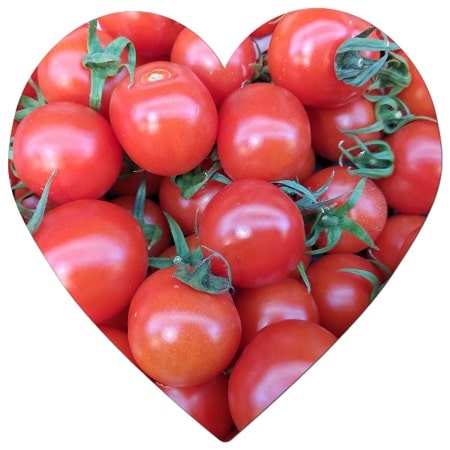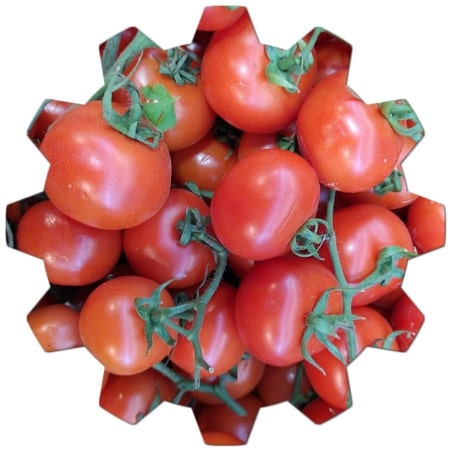Tomato is a fruit that is commonly used as a vegetable in culinary contexts due to its savory flavor and culinary uses. Scientifically known as Solanum lycopersicum, it belongs to the nightshade family, Solanaceae. The tomato plant is a herbaceous perennial in its native habitat, but it is usually cultivated as an annual in temperate climates.
The top five tomato-producing states in the USA were:
- California: California is by far the leading state in tomato production, responsible for a significant portion of the country’s tomato output. The state’s mild climate and fertile soils make it ideal for growing a wide variety of tomatoes, both for fresh consumption and for processing into tomato products like sauces and canned goods.
- Florida: Florida is another major tomato-producing state, especially during the winter months when it supplies much of the country with fresh tomatoes. Florida’s warm and sunny weather allows for year-round tomato cultivation, making it an important source of fresh tomatoes in the off-season for other regions.
- Indiana: Indiana has a strong presence in the processing tomato industry. The state’s favorable climate and agricultural infrastructure make it a significant contributor to the production of tomatoes for processing into various tomato products.
- Ohio: Ohio is also known for its tomato production, with a focus on both fresh tomatoes and tomatoes for processing.
- Tennessee: Tennessee is among the top tomato-producing states, with a substantial amount of tomatoes grown for both fresh consumption and processing.

It’s important to note that agricultural production can change from year to year based on various factors, including weather conditions, market demands, and agricultural practices. Therefore, the ranking of tomato-producing states might have shifted since my last update. For the most current information, I recommend referring to the latest reports from the United States Department of Agriculture (USDA) or other agricultural agencies.
How are tomatoes grown in the US?
Tomatoes are grown in the US using various methods, depending on the region, climate, and scale of production. Here is an overview of how tomatoes are typically grown in the US:
- Outdoor Field Production: The most common method of tomato cultivation in the US is in open fields. In states with favorable climates like California and Florida, tomatoes are grown in large fields on a commercial scale. Farmers prepare the soil, plant tomato seedlings, and provide appropriate irrigation and fertilization throughout the growing season. Field production allows for large quantities of tomatoes to be harvested and is often used for both fresh market tomatoes and tomatoes destined for processing into various products like sauces, soups, and canned goods.
- Greenhouse Production: In regions with colder climates or during the winter months, tomatoes can be grown in greenhouses to extend the growing season and ensure a year-round supply. Greenhouse production allows for more control over environmental factors like temperature, humidity, and light, which can result in higher yields and better quality produce. Some greenhouse operations also use hydroponic or aeroponic systems, where the plants are grown without soil, receiving their nutrients through water solutions.
- High Tunnel Production: High tunnels, also known as hoop houses, are unheated structures that provide some protection from the elements and allow for an extended growing season. They are less sophisticated than greenhouses but can still help protect the plants from frost and provide a more controlled environment compared to outdoor field production.
- Vertical Farming: Some urban and innovative farms use vertical farming techniques to grow tomatoes indoors, stacking the plants in vertical layers to maximize space and efficiency. Vertical farming often employs controlled environment agriculture (CEA) methods with artificial lighting and precise control over environmental conditions.
- Hydroponics and Aquaponics: In certain operations, tomatoes are grown hydroponically, which means they are cultivated in nutrient-rich water solutions without soil. Aquaponics takes this a step further, combining hydroponics with fish farming, as the fish waste provides nutrients for the tomato plants. Both hydroponics and aquaponics can be used in greenhouses or indoor facilities.
- Home Gardens: Many Americans also grow tomatoes in their home gardens for personal use. Home gardening allows individuals to choose specific tomato varieties, including heirloom tomatoes, and enjoy the taste of fresh, homegrown tomatoes during the summer months.
Regardless of the method used, tomato cultivation involves careful management of water, nutrients, pests, and diseases to ensure healthy plant growth and optimal fruit development. Harvesting is typically done when the tomatoes have reached their desired stage of ripeness, and the fruits are then either sold fresh, processed into various products, or used for personal consumption.
How are tomatoes produced in the US?
Tomatoes are produced in the US through a combination of agricultural practices, technology, and supply chain management. The production process involves several stages, from seedling propagation to harvesting and distribution. Here’s an overview of how tomatoes are typically produced in the US:

- Seedling Production: The process begins with producing tomato seedlings. Tomato seeds are sown in special trays or containers filled with growing media, such as peat moss or coconut coir. These trays are placed in controlled environments, like greenhouses or nurseries, where temperature, humidity, and light conditions can be carefully regulated to ensure optimal germination and early plant growth.
- Transplanting: Once the seedlings reach an appropriate size and maturity, they are transplanted from the nursery into the field, high tunnels, or greenhouses where they will continue to grow and bear fruit.
- Field or Greenhouse Cultivation: The cultivation method depends on the region, climate, and the desired production schedule. In states with favorable climates like California and Florida, tomatoes are often grown in open fields, while in colder regions or during the off-season, they are cultivated in greenhouses or high tunnels.
- Cultural Practices: Throughout the growing season, various cultural practices are employed to promote healthy plant growth and fruit development. These practices include irrigation to provide adequate water, fertilization to supply essential nutrients, and pest and disease management to protect the plants from harmful insects and pathogens.
- Harvesting: As the tomato plants mature, they start producing fruit. Harvesting is done when the tomatoes reach their desired stage of ripeness. For fresh market tomatoes, they are picked at a riper stage to ensure good flavor, while tomatoes destined for processing may be harvested at different stages depending on the intended product.
- Processing (if applicable): For tomatoes intended for processing, such as sauces, ketchup, or canned goods, they undergo additional steps like washing, sorting, and processing in food facilities.
- Distribution and Market: Once harvested and processed (if applicable), the tomatoes are distributed to various markets. For fresh tomatoes, they are transported to grocery stores, supermarkets, and local markets. Processed tomatoes may be packaged and distributed to food manufacturers or retailers for sale to consumers.
Throughout the production process, modern agricultural practices, technology, and machinery are often used to enhance efficiency, productivity, and quality. These may include drip irrigation systems, mechanized planting and harvesting equipment, and advanced monitoring and control systems in greenhouse and indoor farming settings. Growing tomatoes in the United States >>
It’s worth noting that sustainable farming practices and organic production methods are also increasingly embraced by many growers, responding to consumer demands for environmentally friendly and healthier food options.
What is Tomato?
Tomato is a fruit that is commonly used as a vegetable in culinary contexts due to its savory flavor and culinary uses. Scientifically known as Solanum lycopersicum, it belongs to the nightshade family, Solanaceae. The tomato plant is a herbaceous perennial in its native habitat, but it is usually cultivated as an annual in temperate climates.
Tomatoes are native to the western regions of South America, specifically in present-day Peru and Ecuador. They were domesticated by indigenous peoples in these regions thousands of years ago. Spanish explorers brought tomatoes to Europe in the 16th century, and from there, they spread to other parts of the world.
Tomatoes come in various shapes, sizes, and colors, ranging from small cherry tomatoes to larger beefsteak varieties. The most common type is the round, red tomato, but there are also orange, yellow, green, and even purple varieties.
Tomatoes are an excellent source of vitamins and minerals, especially vitamin C, vitamin A, potassium, and antioxidants like lycopene. Lycopene, the pigment responsible for the red color in tomatoes, is a powerful antioxidant with potential health benefits.
In cooking, tomatoes are incredibly versatile and used in a wide range of dishes, such as salads, soups, sauces, stews, and sandwiches. They can be consumed raw, cooked, roasted, or blended into sauces and purees.
Tomatoes are a significant crop worldwide and have a massive global production and consumption. They are an essential ingredient in many culinary traditions and cuisines, making them a staple in the diets of people all over the world. Growing tomatoes in America >>
